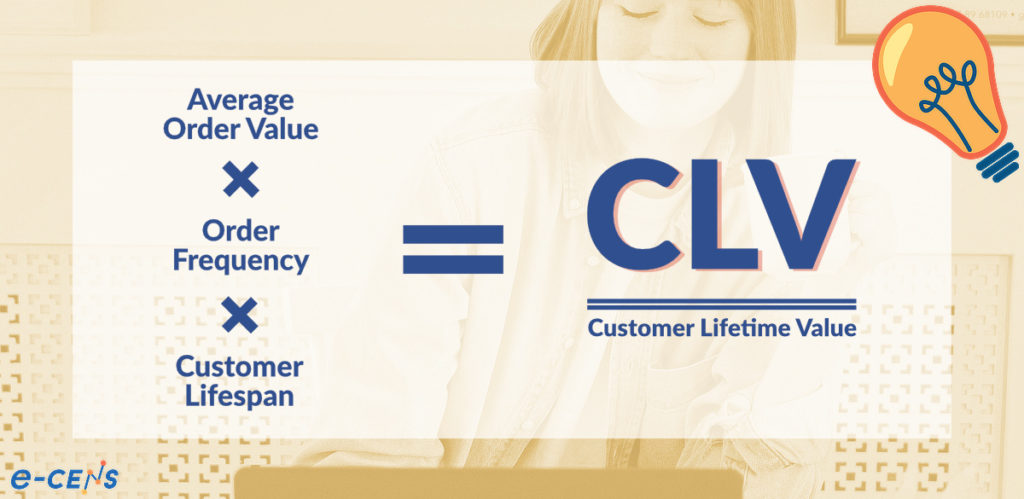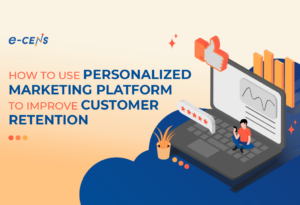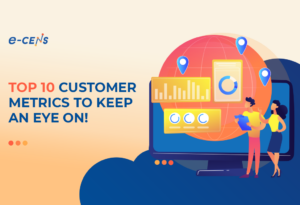“Most businesses are data rich, but information poor.”
Avinash Kaushik, author of Web Analytics 2.0
What are the key e-Commerce metrics you should be measuring? Read on to find out.
The way companies collect and analyze data can differentiate between success and failure in the competitive e-Commerce market. All business decisions are data-driven, so accurate metrics are essential to support informed choices for your company.
However, it’s all too easy to get caught up admiring your social media likes or other “vanity metrics” that have little to no impact on the future of your business. For this reason, it’s important to identify those metrics that can drive success. This article will present some of the key performance indicators (KPIs), and e-Commerce-specific Quality Metrics to keep you on track.

KPIs vs. Quality Metrics
The difference between KPIs and Quality Metrics often goes unnoticed. But knowing the difference will help you understand the impact of each and boost the effectiveness of your data analysis. Every KPI is a metric, but not every metric is a KPI. It is down to individual businesses to determine which metrics qualify as KPIs.
Check out our short informational video for an overview of the differences between KPIs, Quality Metrics, and Helper Metrics.
To sum up, KPIs translate specific business goals into clear, absolute numbers. They measure how effectively a company, individual, or process is achieving success. They may also represent milestones during the completion of an objective, providing crucial data that underpins business development or marketing campaigns.
Quality Metrics (QM) represent measurements of the value and performance of products, services, and processes. Quality Metrics are calculated metrics, typically representing a ratio or an average of other values. It is important to remember that actionable insights can only be gained when analyzing QM against other KPIs or metrics, as the ratio results will stay the same if equation components grow or fall simultaneously.
To get the most insight out of Quality Metrics and KPIs, you’ll need to be proficient with analytics for e-Commerce and the tools required. These will be dependent on the platform you’re analyzing – for example, there are specialized tool stacks for Mobile App Analytics.
Key KPIs for e-Commerce
Revenue KPIs
There are several revenue-related KPIs to consider when tracking the progress of your e-Commerce business to reveal how sales increase or decrease over time.
Number of Purchases
The number of purchases is a straightforward KPI that allows you to track transactions on a daily, monthly, quarterly, and yearly level. In Universal Analytics, this metric is available in the Enhanced e-Commerce reports, which also include information on Average Order Value, Average Product Quantity, and more. Knowing your transaction rates is the baseline data insight that should serve to inform all decisions on UI/UX, Marketing, and Sales strategies.
Returns and Refunds
Revenue doesn’t stop with sales because items may be returned. This makes it necessary to track returns and refunds. Return rate alone will only tell you so much, so the KPI breaks down the return into components.
The refund ratio refers to the number of items refunded divided by the number of items purchased over a given time period.
This should be considered as lost revenue. It is also an area of concern, as many customers who receive refunds are unlikely to purchase from you again.
Exchanges of items are less of a problem. A more positive outcome is a higher exchange ratio – this suggests that you will retain the business of a customer.
e-Commerce Marketing KPIs
KPIs are also the primary factors to consider when analyzing your marketing campaigns. They should form the basis of any campaign and inform future decisions on strategy. Marketing data also helps you improve the user experience of your website and help with personalized and optimized product recommendations.
Some of the most important KPIs to keep in mind when discussing marketing campaigns for e-Commerce are the number of upsells and the number of cross-sells.
Upsell and Cross-sell Conversion Rates
Once you have the appropriate events in place, the information on both your Upsell and the Cross-sell Rate is easily accessible in Google Analytics’ e-Commerce Report with the help of event filtration.
The Upsell Conversion Rate will tell you the number of purchases customers make in addition to the product they initially set out to buy, or if they opted for a more expensive version of the same product. Cross-selling rates refer to the number of times customers added items into their cart to accompany an initial purchase in some way – for example, adding gardening gloves to their order after searching for plant fertilizer.
Examining Upsell and Cross-sell Conversion Rates will inform you on how well your UI is designed to promote additional shopping, as these cart additions or changes are usually stimulated through various widgets (“You Might Also Like”, “People Also Viewed”, etc.)
Most importantly, upsells and cross-sells come with no additional marketing costs. However, if these conversion rates need to be improved, then funds would have to be allocated to either improving design or launching new marketing efforts.
Key e-Commerce Metrics
Best-selling products
This is a simple metric that offers a wealth of information if you interpret it the right way. It provides an indication of your customers’ tastes and offers up inspiration for future marketing campaigns. You may discover, in greater detail, information about your target demographic. You’ll be able to optimize your recommendations and boost your cross-sell and up-sell efficiency.
Searches
A large portion of e-Commerce sales success lies in how well the site’s search engine performs. Users have by now become accustomed, owing to the functionality of Google and other web search engines, to easily access relevant results – and fast.
Websites and Apps that do not provide a seamless search experience risk losing a significant percentage of potential customers. According to recent research by The Harris Poll, more than $333 billion is lost by businesses in the US every year due to poor search functionality.
To see if you’re successfully providing your customers with what they are looking for, you can compare the total number of conducted searches with the number of searches that lead the customer to the “no result” page. The closer the zero search result rate is to 0%, the better the experience for users who come to your website.
Out-of-stock pages are also incredibly important to check in on frequently. This metric will inform you which of your products are enjoying a boost in sales and highlight any flaws in restocking strategies.
Time to purchase
This e-Commerce metric tells you approximately how much time it took for those browsing your site to make a purchase. According to Nielsen Norman Group, over 50% of all online purchases occur within half an hour of a customer landing on the site, and 75% are within 24 hours. But some customers will visit the site repeatedly, not purchasing until four or more weeks after the initial click.
You can leverage this data to adapt your strategy. If you have many customers who purchase quickly – perhaps impulsively – a general product sale may lead to more conversions. Customers who spend longer contemplating a purchase may require marketing emails with more detailed information or promotional materials for other, related, products.
Cart abandonment
It can be painful to see a customer fill their shopping cart, then abandon it before checkout. However, this happens frequently – the average cart abandonment rate across industries is just under 70%, as per recent reports. This is precisely why it’s such an essential metric to track, as it can point out problems with your site or services, which can – usually – be resolved quickly.
Cart abandonment generally occurs after checkout is initiated. An overly lengthy checkout process, or the lack of a guest checkout option, are often factors. If your shipping costs are high, or there are hidden additional costs, you’ll see customers slipping away. Other reasons could include security concerns around payment, or a generally poor onsite user experience.
Average Order Value (AOV)
AOV tracks how much a customer spends per order, providing a valuable average figure. It’s an insight into the popularity of your products, as well as the effectiveness of the recommendations your customers receive. Selling multiple products at once is highly profitable – selling many products at once cuts down transactional fees and shipping costs, and attracting new customers costs you money.
According to RJMetrics, top-performing e-Commerce companies have an AOV of $102. For all other e-Commerce companies, this value is $75.
Average Revenue Per User
One of the key e-Commerce metrics, Average Revenue Per User (ARPU), is a compound indicator – it’s affected by increases in onsite engagement, conversion rate, and basket size.
To calculate your ARPU, divide total revenue by the total number of customers over a chosen time period.
ARPU is an important metric for assessing personalization and optimization efficiency, as well as contributing to the customer lifetime value metric (more on that later). Through ARPU, revenue is analyzed in an arguably more meaningful way than simply looking at conversion rates – you could slash all your prices by 90%, and your conversion rate would soar.
Conversion rate
Considered one of the most important e-Commerce metrics, conversion rate refers to the number of visitors to your site that become customers. According to Oberlo, the average conversion rate for online shoppers worldwide is currently between 1.53–2.36%. That means that for every 100 visitors, one or two will convert.
If you have enormous site traffic but relatively few conversions, you’ll need to experiment with new strategies to encourage sales. This may mean improving your calls to action or landing pages, more competitive pricing, or making the website more effective at encouraging conversions with a smoother UX.
Customer Lifetime Value
Converting a visitor into a customer is one thing, but e-Commerce companies thrive on repeat business. It’s short-sighted to look at a customer in the frame of just one sale, and using the Customer Lifetime Value (CLV) metric gives you the bigger picture of their ongoing value to your business.
To calculate an approximate CLV, take the average order value, order frequency, and customer lifespan and multiply them.

For example, if customers spend an average of $100 per order five times a year, and continue ordering for twenty years, then your average CLV is 100 x 5 x 20 = $10,000.
CLV is often considered the most important metric to track not just in e-Commerce but across industries. This is because a high CLV level is indicative of product-market fit, brand loyalty, and recurring revenue from existing customers.
Learn more about key e-Commerce metrics with our experts
e-CENS is not an impartial observer of the e-Commerce market and the data analytics industry. Our team of experts with more than 15 years of experience in data analytics has assisted numerous e-Commerce clients with data insights and strategic decisions.
Ready to learn more about key KPIs and Quality Metrics for e-Commerce? Contact us.




